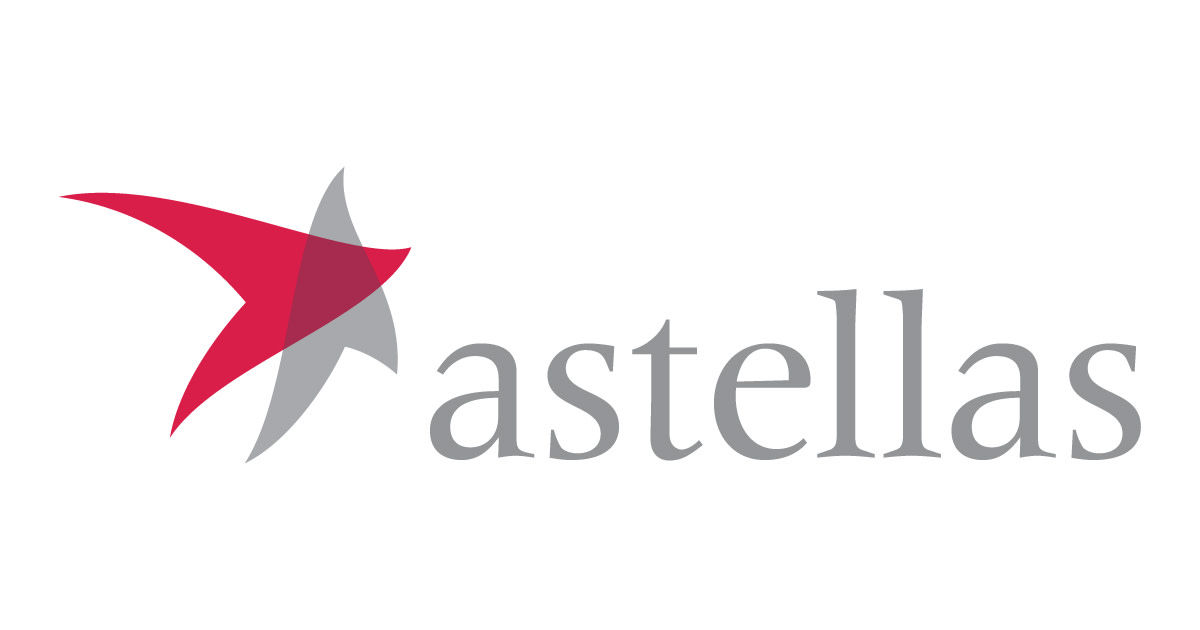预约演示
更新于:2025-12-20
INTERFERON ALFACON-1
更新于:2025-12-20
概要
基本信息
原研机构 |
权益机构- |
最高研发阶段批准上市 |
首次获批日期 美国 (1997-10-06), |
最高研发阶段(中国)批准上市 |
特殊审评- |
登录后查看时间轴
结构/序列
Sequence Code 8226

来源: *****
关联
7
项与 INTERFERON ALFACON-1 相关的临床试验NCT01227798
A Pilot Study to Evaluate the Safety and Efficacy of IFN-alfacon1 (INFERGEN) in the Treatment of Hospitalized Patients Presenting With Influenza-like Illnesses Due to the Pandemic 2009 Swine Origin Influenza A Virus (S-OIV) H1N1 and Other Circulating Influenza Viruses
A Pilot Study to Evaluate the Safety and Efficacy of interferon-Alfacon1 (INFERGEN) in the treatment of patients hospitalized with Influenza-like illness caused by a novel swine origin Influenza virus and other circulating Influenza Viruses.
The use of Interferon-alfacon1 as a co-treatment along with the standard of care antiviral is hypothesized to be safe. Clinical improvement of patients is hypothesized to be quicker.
The use of Interferon-alfacon1 as a co-treatment along with the standard of care antiviral is hypothesized to be safe. Clinical improvement of patients is hypothesized to be quicker.
开始日期2010-11-01 |
申办/合作机构 |
NCT00951223
Observational Prospective Registry of the Efficacy, Safety, and Adherence to Therapy of Infergen® (Interferon Alfacon 1) in Patients Chronically Infected With Hepatitis C Virus
This observational prospective registry is designed to evaluate the safety, adherence, and efficacy of prescribed, patient-administered therapy with Infergen® (Interferon alfacon 1) and other prescribed therapies in patients chronically infected with HCV. The primary endpoint for efficacy will be the SVR rate at 24 weeks after therapy ends.
开始日期2009-08-01 |
申办/合作机构 |
NCT00456248
Phase 4 Study Using Infergen and Ribavirin in Patients With Chronic Hepatitis C Virus Who Achieved Partial Response to Peginterferon-alfa and Ribavirin Therapy
This is a 60-to-72 week multicenter study to evaluate Infergen and Ribavirin in patients with Chronic Hepatitis C Virus after partial response to treatment using peginterferon-alfa and Ribavirin therapy. The study will be conducted at approximately 50 sites across the United States.
开始日期2007-02-01 |
申办/合作机构 |
100 项与 INTERFERON ALFACON-1 相关的临床结果
登录后查看更多信息
100 项与 INTERFERON ALFACON-1 相关的转化医学
登录后查看更多信息
100 项与 INTERFERON ALFACON-1 相关的专利(医药)
登录后查看更多信息
124
项与 INTERFERON ALFACON-1 相关的文献(医药)2022-10-01·Drug research
Pathway Analysis of Patients with Severe Acute Respiratory
Syndrome
Article
作者: Niazi, Mohammad ; Tarkhan, Amneh H. ; Khaleel, Anas ; Zakariya, Abdullah Bassam ; Dayyih, Wael Abu ; Qinna, Nidal A.
Abstract:
Background Coronaviruses are emerging threats for human health, as
demonstrated by the ongoing coronavirus disease 2019 (COVID-19) pandemic that is
caused by severe acute respiratory syndrome coronavirus 2 (SARS-CoV-2).
SARS-CoV-2 is closely related to SARS-CoV-1, which was the cause of the
2002–2004 SARS outbreak, but SARS-CoV-1 has been the subject of a
relatively limited number of studies. Understanding the potential pathways and
molecular targets of SARS-CoV-1 will contribute to current drug repurposing
strategies by helping to predict potential drug-disease associations.
Methods A microarray dataset, GSE1739, of 10 SARS patients and 4 healthy
controls was downloaded from NCBI’s GEO repository, and differential
expression was identified using NCBI’s GEO2R software. Pathway and
enrichment analysis of the differentially expressed genes was carried out using
Ingenuity Pathway Analysis and Gene Set Enrichment Analysis, respectively.
Results Our findings show that the drugs dexamethasone, filgrastim,
interferon alfacon-1, and levodopa were among the most significant upstream
regulators of differential gene expression in SARS patients, while neutrophil
degranulation was the most significantly enriched pathway.
Conclusion An enhanced understanding of the pathways and molecular targets
of SARS-CoV-1 in humans will contribute to current and future drug repurposing
strategies, which are an essential tool to combat rapidly emerging health
threats.
2020-03-01·Biotechnology and applied biochemistry4区 · 工程技术
Evaluating the ion exchange chromatography for matrix‐assisted PEGylation and purification of consensus interferon
4区 · 工程技术
Article
作者: Akram, Muhammad ; Ahmed, Nadeem ; Azam, Farhana ; Tahir, Saad ; Khan, Mohsin Ahmad ; Zafar, Ahmad Usman ; Bajwa, Fakiha
Abstract:
Scientists have implemented protein‐PEGylation technology for boosting‐up the pharmacokinetics and stability of recombinant therapeutic proteins. In the present study, (a) matrix‐assisted PEGylation was compared with solution‐phase PEGylation and (b) matrix‐assisted PEGylation was performed with different ion exchange resins for impact of chromatography medium on yield and purity of PEGylated product. DEAE Sepharose CL 6B, DEAE Fracto gel, and Macro cap Q ion exchange chromatography medium were compared for on column PEGylation and purification of cIFN. A MSC‐PEG of 12.0 KDa was selected. cIFN was bound to ion exchange medium, and PEG solution was passed through resin for 180 Min, and protein was eluted by sodium chloride linear gradient. Yield and purity for mono‐PEGylated cIFN with Macro cap Q matrix was 75% and 99%, respectively, whereas for DEAE Sepharose was 45% and 60%. DEAE Fracto gelTM purity was 85% with 50% yield of mono‐PEGylated cIFN. Further investigation of in vitro biological activities demonstrated that about 30% antiviral activity was reduced as compared to unmodified cIFN. However, thermal stability was significantly improved. The present study proved that matrix‐assisted PEGylation can improve the yield and purity of mono‐PEGylated product, and Macro Cap resin provided the highest yield of a homogeneous product.In present study, (a) matrix‐assisted PEGylation was compared with solution‐phase PEGylation and (b) matrix‐assisted PEGylation was performed with different ion exchange resins for impact of chromatography medium on yield and purity of PEGylated product. Matrix‐assisted PEGylation increases the yield of mono‐PEGylated product and further Macro CapTM produced highest yield and purity of PEGylated cIFN.
2020-02-01·PROTEIN EXPRESSION AND PURIFICATION
Production of potent long-lasting consensus interferon using albumin fusion technology in Pichia pastoris expression system
Article
作者: Tahir, Saad ; Ahmed, Nadeem ; Naseem, Muhammad Umair ; Zafar, Ahmad Usman ; Khan, Mohsin Ahmad
Consensus interferon (cIFN) is a wholly synthetic therapeutic protein which is used to treat hepatitis C/B and certain types of malignancies. It has short serum half-life, therefore, to maintain its therapeutic level in the human body it requires thrice-weekly administration. Various strategies like PEGylation and micro-encapsulation have been developed during the last few years to enhance the pharmacokinetics of small therapeutic peptides. This study executed the human albumin-fusion technology, a simple and flexible approach to extend the serum circulating half-life of cIFN, because human serum albumin (HSA) has long circulating half-life (19 days) and very minute immunological activities. We integrated the codon-optimized HSA-cIFN fusion gene into Pichia pastoris genome by homologous recombination. The selection of hyper-resistant P. pastoris clone against Zeocin™ achieved a high-level secretory expression (250 mg/L) of fusion protein. HSA-cIFN fusion protein was purified using one-step purification by affinity chromatography with 34% recovery. The SDS-PAGE and SEC-HPLC analysis confirmed the final purified product has molecular weight of 87 kDa with 98% purity. Western blot analysis using anti-IFN antibodies further verified the purified HSA-cIFN fusion protein. The specific biological activity was 2.1 × 106 IU/mg as assessed by cytopathic inhibition assay, and half-life of fusion protein was estimated by in vitro thermal and proteolytic stability studies. This work concludes that by using albumin fusion technology, codon optimization and one-step purification a high yield of 86 mg/L of biologically active protein with improved serum half-life was obtained.
1
项与 INTERFERON ALFACON-1 相关的新闻(医药)2023-06-29
本次网络研讨会由全球法规监管咨询服务公司DataRevive(德顺达) 和欧洲CDMO公司Ardena联合举办,来自前FDA和业界的临床、监管专家和数据科学家将共同分析有关注射剂使用中稳定性研究的监管环境,并探讨相关的WHO、EMA、FDA 和 USP 指导文件。此外,研讨会也将讨论适用于早期临床试验中的IV兼容性和使用中稳定性研究的主要设计参数。专家们还将提供多个案例研究,探讨不同场景下的实际操作。(详情见下方海报)您将从四位资深CMC、临床专家和数据科学家的对谈中了解到有关I期和II期临床试验中注射剂使用中稳定性研究的设计和执行经验,以及该领域的核心监管要求和挑战,以确保注射药物在管理过程中的质量和安全。嘉宾介绍Kathleen B. Retterson女士在生物制剂行业拥有超过30 年的工作经验,曾任Amgen副总裁、罗德岛工厂总经理、Amgen多工厂Thousand Oaks生产基地负责人,并曾于Genzyme和Charles River担任要职,负责监督生产、质保、质控、工艺开发和供应链。她曾负责EPOGEN®、Neupogen®、Aranesp®、Neulasta®、Infergen®、Enbrel®、Cerazyme®、Fabrazyme®和Myozyme®和Myozyme®等多个顶级生物制剂的成功生产。Kristin Baird医生曾在FDA任医学官8年,在美国国家卫生研究院任医师及临床研究员15年,并曾在约翰霍普金斯医院/美国国家癌症研究所进行儿科血液/肿瘤学临床研究。她在细胞基因疗法领域有资深法规咨询经验,专精于肿瘤学及免疫学、临床研究和BLA审评。Baird医生在天普大学医学院获得医学博士学位。Kelly Van Looveren是 Ardena的Senior CMC Writer,负责为客户提供法规监管建议、撰写科学报告和申报资料。Kelly拥有生物医学生物技术博士学位,拥有深入的生物技术和大分子领域专业知识,同时具备丰富的大型制药公司项目经验。Stef De Lombaerde 毕业于药剂师专业,并于 2018 年在根特大学获药学博士学位。之后,他在安特卫普大学医院担任放射药剂师,在静脉注射无菌制剂的 GMP 制造和质量控制方面积累了丰富经验。他在Ardena担任分析开发团队负责人,负责分析方法的实施和验证,协调各种新型药物产品(无菌和非无菌)的稳定性研究和QC测试。扫码加入群聊交流互动、问题解答、干货分享直播回看、线上下活动等关于德顺达DataReviveDataRevive (德顺达健康咨询) 是一家专业的法规监管服务公司,专注于新型小分子药物和生物制品领域,为创新药企和生物科技公司提供全球主要市场的真实世界监管、CMC、非临床、临床和GxP专业咨询服务。我们在美国、中国等地设有办公室,团队包括前FDA CMC部门及临床部门专家、业界CMC、非临床和临床领域的领军翘楚,以及拥有丰富法规监管经验的项目管理精英。我们与全球客户携手合作,致力于加速产品上市进程,从药品开发的最初阶段到批准后的监管支持,始终秉持高质量、高效率的服务。更多资讯,请访问 www.data-revive.com 点击阅读原文,立即报名~
基因疗法临床1期细胞疗法
100 项与 INTERFERON ALFACON-1 相关的药物交易
登录后查看更多信息
外链
| KEGG | Wiki | ATC | Drug Bank |
|---|---|---|---|
| D02744 | INTERFERON ALFACON-1 |
研发状态
批准上市
10 条最早获批的记录, 后查看更多信息
登录
| 适应症 | 国家/地区 | 公司 | 日期 |
|---|---|---|---|
| 慢性丙型肝炎 | 欧盟 | 1999-02-01 | |
| 慢性丙型肝炎 | 冰岛 | 1999-02-01 | |
| 慢性丙型肝炎 | 列支敦士登 | 1999-02-01 | |
| 慢性丙型肝炎 | 挪威 | 1999-02-01 | |
| 丙型肝炎 | 美国 | 1997-10-06 |
未上市
10 条进展最快的记录, 后查看更多信息
登录
| 适应症 | 最高研发状态 | 国家/地区 | 公司 | 日期 |
|---|---|---|---|---|
| 非霍奇金淋巴瘤 | 临床2期 | 日本 | - | |
| 卵巢癌 | 临床2期 | 欧盟 | - | |
| 病毒感染 | 药物发现 | 美国 | - |
登录后查看更多信息
临床结果
临床结果
适应症
分期
评价
查看全部结果
| 研究 | 分期 | 人群特征 | 评价人数 | 分组 | 结果 | 评价 | 发布日期 |
|---|
No Data | |||||||
登录后查看更多信息
转化医学
使用我们的转化医学数据加速您的研究。
登录
或

药物交易
使用我们的药物交易数据加速您的研究。
登录
或

核心专利
使用我们的核心专利数据促进您的研究。
登录
或

临床分析
紧跟全球注册中心的最新临床试验。
登录
或

批准
利用最新的监管批准信息加速您的研究。
登录
或

生物类似药
生物类似药在不同国家/地区的竞争态势。请注意临床1/2期并入临床2期,临床2/3期并入临床3期
登录
或

特殊审评
只需点击几下即可了解关键药物信息。
登录
或

生物医药百科问答
全新生物医药AI Agent 覆盖科研全链路,让突破性发现快人一步
立即开始免费试用!
智慧芽新药情报库是智慧芽专为生命科学人士构建的基于AI的创新药情报平台,助您全方位提升您的研发与决策效率。
立即开始数据试用!
智慧芽新药库数据也通过智慧芽数据服务平台,以API或者数据包形式对外开放,助您更加充分利用智慧芽新药情报信息。
生物序列数据库
生物药研发创新
免费使用
化学结构数据库
小分子化药研发创新
免费使用




